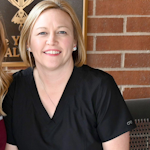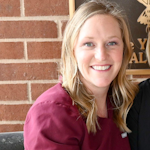What is integrated dental hygiene, and is it right for you?
Research proves that poor oral health contributes to poor systemic health outcomes. Although clinical dentistry is vital to achieving oral health, research shows the importance of a preventive, comprehensive approach for optimal wellness.
What is an integrated dental hygienist?
The Oklahoma City Indian Clinic (OKCIC) is paving the way with a unique approach to improving oral-systemic outcomes by introducing the integrated dental hygienist (I-RDH). The I-RDH position is the epitome of dentistry outside the box. As a public health organization, OKCIC focuses on true integration of care to lead to the best outcomes for patients. I-RDHs at OKCIC hold certificates in oral-systemic education from the National Network of Healthcare Hygienists (NNHH). They are deployed to various medical clinics and focus on the relationship between the oral cavity and overall health.
Staggering statistics
Nationwide, dental caries is the most common form of chronic disease in childhood. According to the American Academy of Pediatrics, a child between the ages of two and four is five times more likely to experience tooth decay than the average US rate.1
According to the American Journal of Public Health, American Indian/Alaska Native (AIAN) children have the highest rate of tooth decay among any other racial/ethnic groups in the US. On average, 68% of AIAN children have untreated dental caries. One-third of AIAN children report missing school because of dental pain, and 25% report that they avoid smiling or laughing because of the poor appearance of their teeth. Children between the ages of six and 14 have a history of decay twice the rate of dental caries experienced by the general population, and 91% of AIAN teens ages 15 to 19 have caries.2
You might be interested in another alternative practice story: The entrepreneurial hygienist: Changing how care is delivered
What does appointment with an I-RDH look like?
While a patient waits for their medical appointment, the I-RDH greets the family and requests consent to perform an oral health assessment. While looking in the oral cavity, the I-RDH evaluates several things, including plaque index, gingival health, dental caries, presence of sealants, signs of bulimia, and signs of abuse or neglect. Findings are addressed at that time and next steps are planned if necessary.
Following the assessment, oral hygiene instructions are discussed with the child and caregiver. Most children need assistance implementing good home care habits, whether with flossing or providing healthier food and drink options. To complete the appointment, topical fluoride varnish is applied, and follow-up appointments are scheduled as needed. If a family is scheduling their child’s first dental appointment, the I-RDH will schedule the child so that their first dental provider is a familiar face, which provides true continuity of care.
Expanding integrated hygiene
Due to the success of the I-RDH program, OKCIC recently expanded to include an I-RDH in both the women’s health and metabolic care departments. By becoming part of the women’s health team, we have a unique opportunity to educate pregnant mothers from the start of their pregnancy. If we can help a mother be decay-free and establish routine home dental care, we can help their children establish a solid foundation from the start.
The I-RDH in the metabolic center is the newest addition to the I-RDH team. This clinician allows for more frequent education for the highest risk diabetic patients who are statistically more at risk for periodontal disease.
OKCIC’s long-term goal is to have at least one I-RDH trained in oral-systemic health in every specialty clinic in the organization. With real-time dental access, education, and medical-dental collaboration, patients will benefit from true health equity that finally includes oral health.
References
- Bell S, Deen JF, Fuentes M, et al. Caring for American Indian and Alaska Native children and adolescents. American Academy of Pediatrics. April 1, 2021. https://publications.aap.org/pediatrics/article/147/4/e2021050498/180860/Caring-for-American-Indian-and-Alaska-Native?autologincheck=redirected
- Nash DA, Nagel RJ. Confronting oral health disparities among American Indian/Alaska Native children: the pediatric oral health therapist. Am J Public Health. 2005;95(8):1325-1329. doi:10.2105/AJPH.2005.061796. Epub 2005 Jul 7.








